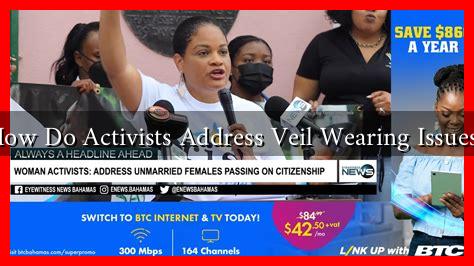-
Table of Contents
How Do Activists Address Veil Wearing Issues?
The issue of veil wearing, particularly among Muslim women, has sparked significant debate and activism across the globe. Activists address these issues from various angles, advocating for rights, cultural understanding, and personal choice. This article explores how activists engage with veil wearing issues, the challenges they face, and the impact of their work.
The Context of Veil Wearing
Veil wearing, which includes various forms such as the hijab, niqab, and burqa, is often a symbol of cultural identity and religious expression. However, it has also become a focal point for discussions about women’s rights, freedom of expression, and secularism. Activists approach these issues by emphasizing the following points:
- Personal Choice: Many activists argue that wearing a veil should be a personal choice rather than a mandate imposed by society or government.
- Religious Freedom: Activists advocate for the right to practice one’s religion freely, which includes the choice to wear a veil.
- Combatting Stereotypes: Activists work to dismantle stereotypes associated with veil wearing, promoting a more nuanced understanding of Muslim women’s experiences.
Activism in Action: Case Studies
Several organizations and movements have emerged to address veil wearing issues, each employing unique strategies to advocate for change. Here are a few notable examples:
1. The Hijab Movement
The Hijab Movement, which gained traction in the early 2000s, focuses on empowering women to wear the hijab as a symbol of their faith and identity. Activists within this movement often use social media platforms to share personal stories and experiences, fostering a sense of community and support. For instance, the hashtag #HijabDay encourages women of all backgrounds to wear a hijab for a day to promote understanding and solidarity.
2. The Burkini Controversy
The burkini, a swimsuit designed for Muslim women, became a point of contention in France, where several municipalities banned its use on public beaches. Activists rallied against these bans, arguing that they infringe on personal freedoms and target Muslim women specifically. The case of the burkini highlights how activists can mobilize public opinion and legal challenges to protect individual rights.
3. The Women’s March
The Women’s March, which began in 2017, has included a diverse array of voices advocating for women’s rights, including those of Muslim women who wear veils. The march has provided a platform for activists to address intersectionality, emphasizing that the fight for women’s rights must include the rights of all women, regardless of their cultural or religious practices.
Challenges Faced by Activists
Despite their efforts, activists addressing veil wearing issues encounter several challenges:
- Islamophobia: Activists often face backlash and discrimination, which can hinder their efforts to promote understanding and acceptance.
- Political Resistance: In some countries, government policies may actively oppose the wearing of veils, complicating activists’ work.
- Internal Divisions: Within the Muslim community, differing opinions on veil wearing can lead to tensions and disagreements among activists.
The Impact of Activism
Despite these challenges, activism surrounding veil wearing has led to significant changes in public perception and policy. Some of the positive outcomes include:
- Increased Awareness: Activism has raised awareness about the complexities of veil wearing, encouraging more informed discussions.
- Policy Changes: In some regions, activists have successfully lobbied for policies that protect the rights of women to wear veils without discrimination.
- Empowerment: Many women report feeling empowered by the support of activist movements, which validate their choices and experiences.
Conclusion
Activists addressing veil wearing issues play a crucial role in advocating for personal choice, religious freedom, and cultural understanding. Through various movements and campaigns, they confront stereotypes and challenge discriminatory practices. While they face significant challenges, the impact of their work is evident in the growing awareness and acceptance of diverse expressions of identity. As society continues to grapple with these issues, the voices of activists remain vital in shaping a more inclusive future.
For further reading on the topic, you can explore resources from organizations like the Amnesty International and Human Rights Watch.

